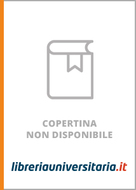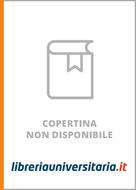
Buda
Buda Castle, Hegyvidék, People from Buda, Óbuda-Békásmegyer, Újbuda, Ignaz Semmelweis, Georg Solti, History of Buda Castle, Interiors of Buda Castle,
- Editore:
Books LLC, Reference Series
- EAN:
9781155992594
- ISBN:
1155992598
- Pagine:
- 56
- Formato:
- Paperback
- Lingua:
- Inglese
Descrizione Buda
Source: Wikipedia. Pages: 54. Chapters: Buda Castle, Hegyvidék, People from Buda, Óbuda-Békásmegyer, Újbuda, Ignaz Semmelweis, Georg Solti, History of Buda Castle, Interiors of Buda Castle, Medieval Royal Palace, Bernhard von Wüllerstorf-Urbair, József Eötvös, Palatinal Crypt, László Bíró, Works of art in Buda Castle, Sashegy, Archduke Stephen, Palatine of Hungary, Gellért Hill, Labyrinth of Buda Castle, Alajos Hauszmann, Gül Baba, National Széchényi Library, Georg Jarno, Palace Chapel, August Silberstein, Krisztinaváros, Andreas Dudith, Karl Stoerk, Hungarian National Gallery, Maria Aurora of Spiegel, Moritz Wahrmann, Tivadar Pauler, Edmund Hauler, Irina Risenzon, Ladislaus Weinek, Károly Hieronymi, József Kürschák, Ferenc Toldy, Pasarét, Maximilian Steiner, Rózsadomb, András Hess, Kelenföld, Jánoshegy. Excerpt: Ignaz Philipp Semmelweis (July 1, 1818 - August 13, 1865; in Hungarian Semmelweis Ignác Fülöp or slightly "internationalized" Ignac Semmelweis) was a Hungarian physician described as the "savior of mothers", who discovered by 1847 that the incidence of puerperal fever could be drastically cut by the use of hand disinfection (by means of hand washing with chlorinated lime solution) in obstetrical clinics. Puerperal fever (or childbed fever) was common in mid-19th-century hospitals and often fatal, with mortality at 10%-35%. Semmelweis postulated the theory of washing with "chlorinated lime solutions" in 1847 while working in Vienna General Hospital's First Obstetrical Clinic, where doctors' wards had three times the mortality of midwives' wards. He published a book of his findings in childbed fever in Etiology, Concept and Prophylaxis of Childbed Fever. Despite various publications of results where hand-washing reduced mortality to below 1%, Semmelweis's practice earned widespread acceptance only years after his death, when Louis Pasteur confirmed the germ theory. In 1865, a nervous breakdown (or possibly Alzheimer's) landed him in an asylum, where Semmelweis ironically died of septicemia, at age 47. Teresia Müller and Josef Semmelweis, the parents of Ignaz Semmelweis Ignaz Semmelweis as a child in 1830Ignaz Semmelweis was born on July 1, 1818 in the Tabán, an area of Budapest, Hungary (then part of the Habsburg Empire). He was the fifth child out of ten of a prosperous grocer family of Josef and Teresia Müller Semmelweis. The family was German-speaking. His father, Josef Semmelweis (1778-1846), was born in Eisenstadt (Hungarian Kismarton), then in Hungary. Josef achieved permission to set up shop in Buda in 1806 and, in the same year, opened a wholesale business with spices and general consumer goods named zum Weißen Elephanten (to the White Elephant) in Heindl-Haus in Tabán (today a museum). By 1810, he was a wealthy man when he married Teresia Müller, daughter of












